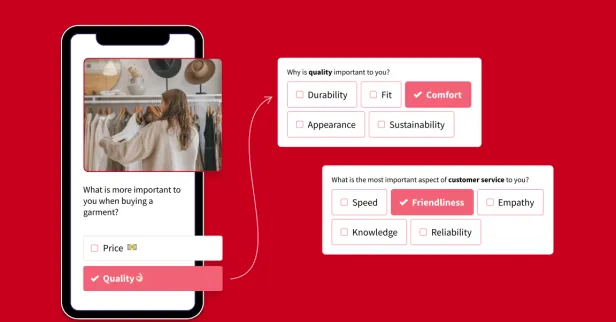Statistical analysis is a critical part of conducting research across disciplines, from business and psychology to medicine and engineering. Among the many tools at a researcher’s disposal, the t-test is one of the most widely used and fundamental. It allows us to assess whether differences between groups or samples are statistically significant—an important step in hypothesis testing.
This blog dives deep into the theory and application of the t-test including its types, when to use it, and how to run one. By the end, you'll have a clear understanding of this essential statistical tool.
What Is a t-Test?
A t-test is a statistical method used to compare the means of one or more groups to determine if the observed differences are significant or if they could have occurred by chance.
The t-test is based on the t-distribution, a probability distribution that is symmetric and bell-shaped, similar to the normal distribution but with heavier tails. The t-distribution is particularly useful when working with small sample sizes, which is why the t-test is favored in studies with limited data points.
The formula for the t-test varies depending on the type, but the general concept involves comparing the observed differences in means to the variability (or standard deviation) in the data, relative to the sample size.
Key Assumptions of the t-Test
Before running a t-test, it’s important to ensure that your data meets the following assumptions:
- Normality: The data should be approximately normally distributed.
- Independence: Observations must be independent of each other.
- Homogeneity of variance: Variance within groups should be similar for two-sample t-tests.
Types of t-Test
There are several types of t-tests, each suited to specific research questions and data structures.
One-sample t-Test
| WHAT IS IT | EXAMPLE USE CASE | FORMULA |
|
Compares the mean of a single group to a known value or theoretical expectation. |
A company wants to determine if the average time it takes to process an order (mean = 32 minutes) differs from their target time of 30 minutes. |
t=xˉ−μs/nt = \frac{\bar{x} - \mu}{s / \sqrt{n}}t=s/nxˉ−μ Where:
|
Two-sample t-Test
| WHAT IS IT | EXAMPLE USE CASE | FORMULA |
|
Compares the means of two independent groups to determine if they are significantly different from each other. Types:
|
A researcher wants to compare the effectiveness of two different medications on reducing blood pressure. |
t=xˉ1−xˉ2s12n1+s22n2t = \frac{\bar{x}_1 - \bar{x}_2}{\sqrt{\frac{s_1^2}{n_1} + \frac{s_2^2}{n_2}}}t=n1s12+n2s22xˉ1−xˉ2
|
Paired t-Test
| WHAT IS IT | EXAMPLE USE CASE | FORMULA |
|
Compares two related samples, such as measurements taken before and after an intervention on the same subjects. Types:
|
A gym tracks the weight of members before and after a 12-week fitness program to evaluate its effectiveness. |
t=dˉsd/nt = \frac{\bar{d}}{s_d / \sqrt{n}}t=sd/ndˉ
|
When Should You Use a t-Test?
A t-test is appropriate when you need to determine if a difference in means is statistically significant. Here are common scenarios:
- Testing a hypothesis: To determine whether a sample mean differs from a known population mean (one-sample t-test).
- Comparing groups: To test whether two independent groups differ significantly on a specific measure (two-sample t-test).
- Evaluating change: To assess the impact of an intervention or change over time in the same group (paired t-test).
- Small sample sizes: When the sample size is small, making other tests (like the z-test) less suitable.
How to Run a t-Test?
Conducting a t-test involves several steps, from setting up the hypothesis to interpreting the results. Here’s a step-by-step guide:
Step 1: Define Your Hypotheses
- Null Hypothesis (H0H_0H0): Assumes no difference between groups or that the observed difference is due to chance.
- Alternative Hypothesis (HaH_aHa): Suggests a significant difference exists.
For example:
- H0H_0H0: The mean blood pressure reduction is the same for both medications.
- HaH_aHa: The mean blood pressure reduction differs between the medications.
Step 2: Choose the Right t-Test
Select the type of t-test based on your research design:
- One-sample t-test for comparing a sample mean to a known value.
- Two-sample t-test for comparing independent groups.
- Paired t-test for analyzing related or repeated measures.
Step 3: Calculate the Test Statistic
Using the formulas provided earlier, compute the t-value based on your data.
If you’re not performing the calculations manually, you can use software like Excel, SPSS, R, or Python to automate the process.
Step 4: Determine the Degrees of Freedom (df)
Degrees of freedom depend on the type of t-test:
- For a one-sample t-test: df=n−1df = n - 1df=n−1
- For a two-sample t-test: df=n1+n2−2df = n_1 + n_2 - 2df=n1+n2−2
- For a paired t-test: df=n−1df = n - 1df=n−1
Step 5: Find the Critical t-Value
Using a t-distribution table, locate the critical t-value for your degrees of freedom and significance level (commonly α=0.05\alpha = 0.05α=0.05).
Step 6: Compare and Interpret
Compare your calculated t-value to the critical t-value:
- If ∣t∣>tcritical|t| > t_{critical}∣t∣>tcritical, reject the null hypothesis (H0H_0H0).
- If ∣t∣≤tcritical|t| \leq t_{critical}∣t∣≤tcritical, fail to reject the null hypothesis.
Step 7: Report the Results
Clearly present your findings, including:
- The type of t-test used.
- The t-value, degrees of freedom, and p-value.
- Your interpretation of the results (e.g., “The intervention significantly reduced blood pressure, t(29)=2.45,p<0.05t(29) = 2.45, p < 0.05t(29)=2.45,p<0.05.”).
The t-test is an important tool for researchers seeking to compare means and assess statistical significance. Understanding its types—one-sample, two-sample, and paired—and their respective use cases ensures that you apply this method effectively to your data.
Whether you’re testing a new hypothesis, evaluating group differences, or analyzing pre-and post-intervention data, the t-test provides a robust framework for deriving meaningful insights.
By mastering the steps to run a t-test, you can confidently interpret your results, advancing your research with precision and rigor.
